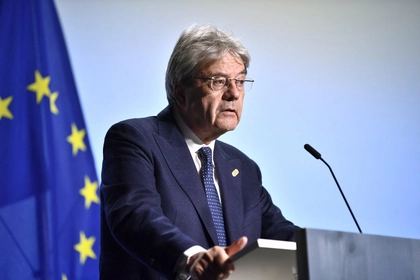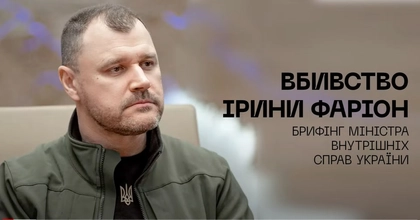By now Washington’s strategy – if you can call it that – should be clear: Make sure Ukraine survives, but do not let Russia lose outright.
In the lead-up to the full-scale invasion of February 2022, the United States expected Kyiv to fall within a week. Contingency plans were floated for either a rump state in western Ukraine or a government in exile. But Kyiv held, and the Russian army proved less effective than anticipated.
JOIN US ON TELEGRAM
Follow our coverage of the war on the @Kyivpost_official.
No one with any impact on these contingency plans seriously thought the Ukrainians would resist as well as they did. Certainly not President Joe Biden’s top advisors: CIA Director William Burns and National Security Advisor Jake Sullivan. The only people who understood what stiff resistance Russia would face were those already familiar with Ukraine, its army, its history and people.
Over the course of the war, thanks to a flood of weapons and intelligence offered by the US and its NATO allies, Ukraine has had some success in pushing the Russians out: up to 50 percent of the land initially grabbed by Russia in spring 2022 has been taken back.
However, there have been clear limits to how much the US is willing to offer. The Americans have consistently balked at giving long-range missiles to strike the Kremlin’s assets and supply nodes deep in Russian territory. And Washington has repeatedly insisted that the weapons they do give should not be used outside of Ukrainian territory.

Kuleba Talks Peace in China – Bohdan Nahaylo
Why not let Ukraine win?
For many American advisors – especially Burns and Sullivan, who came of political age in the shadow of the Cold War’s balance-of-power maneuvering – any conflict or change in Europe is still seen as a zero-sum game. NATO enlargement into Eastern Europe was a score for Washington and a loss for Moscow. Likewise, Brexit was an own-goal which Moscow facilitated, and Donald Trump’s threatening to pull out of NATO was a score for Russia.
Europe was always at stake. But Ukraine was never fully accepted as part of Europe in the eyes of the US. It was viewed, at best, as a geostrategic buffer between Europe and Russia. The fact that Putin saw it as a fictional state – really just part of Russia – struck a chord with what many so-called “Russia experts” had been taught.
And now that China has entered the Great Game in earnest, a loss for Russia is more likely to be picked up by Beijing than Washington. Therefore, it is better to keep Russia from losing too much, many American analysts argue.
Paradoxically, the problem with Biden’s advisors, especially Burns, is that they are too knowledgeable about Russian affairs. Burns was ambassador to Russia, then deputy secretary of state. He ran the Carnegie Foundation. He’s been dealing with the minutia of the Washington-Moscow relationship for decades. And Sullivan, though younger, has always been an outstanding student, at the top of his class.
What blinds these advisors, though, is how they learned what they know about Russia. Either they were educated through the finest universities’ Soviet/Russia studies departments – which are inherently Moscow-centric – or they were trained by dealing directly with the Russian elite (in embassies or think tanks).
In other words, they’ve been steeped in a Russo-centric understanding of Eurasian geopolitics. And that vision has always given short shrift to Ukraine.
To assume a deal can be imposed from outside would be to invite the very Furies unleashed through Ukraine in the 20th century
What won’t happen
In Washington, the logic that is often used to rationalize making sure Ukraine survives without Russia losing goes as follows: If Ukraine wins – i.e., pushes Russia out beyond Ukraine’s 1991 border – then the Russian Federation will risk falling apart. If Russia falls apart then there will be years of chaos in a state that has nuclear weapons. And once Russia is weakened, China will step in and reinforce their Central Asian alliances, if not simply grab what is now Russian territory.
On the surface, and from Washington’s perspective, the logic seems unassailable. But it’s wrong.
The reasoning is based on a superficial vision of Russia. The Russian Federation will not fall apart if Russian troops are pushed out from Ukraine. There will be no popular insurrection, neither in Moscow, nor in Siberia. At the most, it will fray at the edges; Chechnya may experience an independentist or anti-Kadyrov conflict.
We have seen the liberal opposition to Moscow. Unfortunately, they are lame. If Putin goes, then he will be replaced by another silovik – either FSB director Nikolai Patrushev, or someone younger, like Putin’s chief of staff Anton Vaino, or some shadowy figure from military intelligence. The army will fall into line with whoever controls the state apparatus. And the population will fall into line with whoever has the biggest guns, because the media controlled by the siloviki will tell them to do so.
This assessment is based on Russian history. Because turmoil in “Russia proper” tends to get snuffed out rather quickly. When so-called Russia experts conjure images of chaos, what they are really referring to is chaos along Russia’s western border. To wit: Ukraine.
Recognizing the fault line
Those fearful of mayhem in Russia often hark back to the Russia Civil War that followed the Bolshevik Revolution.
Yet despite the cinematic charges staged by film director Sergei Eisenstein, the actual revolution was not as furious and bloody as some may imagine.
The first major battles of the Civil War took place in the Kuban and Rostov regions, with Don Cossacks contesting the Bolsheviks.
Very soon after, the main battlefields flared up in Ukraine. From 1917 to 1921, Germans, Bolshevik Reds, Monarchist Whites, Poles, Ukrainian nationalists and anarchists all fought on Ukrainian soil amid continually shifting alliances.
World War II produced a similar pattern. The brunt of Operation Barbarossa, when Nazi Germany invaded the Soviet Union in 1941, struck Ukraine and Belarus. And throughout the war, much of the most ferocious fighting took place there, with the front line’s devastation passing through at least twice.
And let’s not forget the 1932-33 Holodomor, which saw the apocalyptic chaos of hunger ravage Ukraine’s countryside; or that the Holocaust, Germany’s attempt to exterminate Europe’s Jews, took place largely on Ukrainian and Polish soil.
Inviting chaos by preventing it
So, if the West continues to give Ukraine only enough to survive, while keeping to some tacit diplomatic agreement that would preclude regime change in Russia, then the US and EU will have to press Ukrainian President Volodymyr Zelensky to accept territorial and political concessions.
This is easier said than done; and it keeps being said by some of the most influential think-tankers in Washington.
Zelensky is no dictator. He isn’t even an autocrat the way some of his Ukrainian critics like to depict him. He is a leader with a remarkable understanding of Ukrainians’ pulse and mood, how much they are willing to sacrifice, and at what point they will rebel.
Ukrainians may or may not accept the pre-2014 borders as a concession. They may shrewdly stall the situation – for years, if necessary – until more favorable conditions arise. But to deny the Ukrainian people agency in making their decision, to assume a deal can be imposed or cajoled from outside, would be to invite the very Furies unleashed through Ukraine in the 20th century.
If Ukrainians don’t like the concessions imposed on them, they will take to the streets. And then, real chaos will ensue. The kind of chaos Russia experts have classified as “Russian Civil War-type chaos” or “Holocaust-type chaos.”
Because Ukraine has always been on the fault line. And whether that fault line is viewed as political, religious, civilizational, geostrategic, or even metaphysical – it’s there, cutting through steppes, cracking open on either side of the Dnipro River.
The only way to prevent the chaos is to push the fighting far enough east, away from the fault line, so that it snuffs itself out in the inertial mire of Russian despotism.
You can also highlight the text and press Ctrl + Enter






